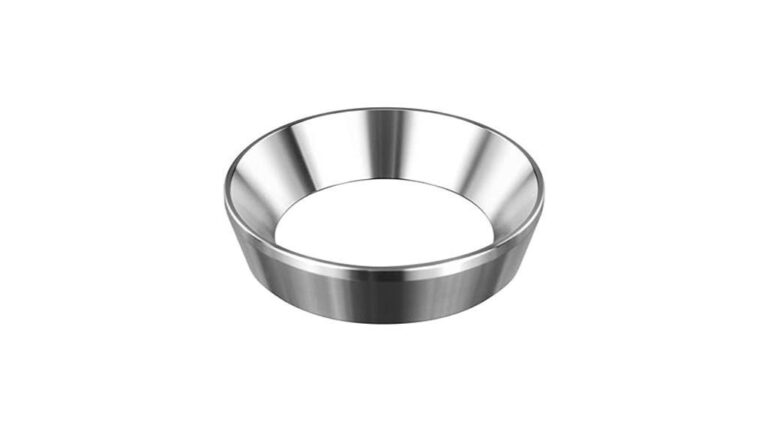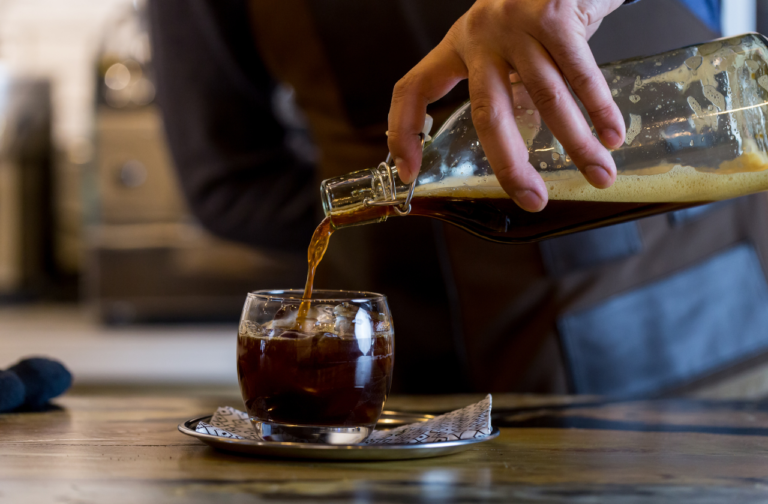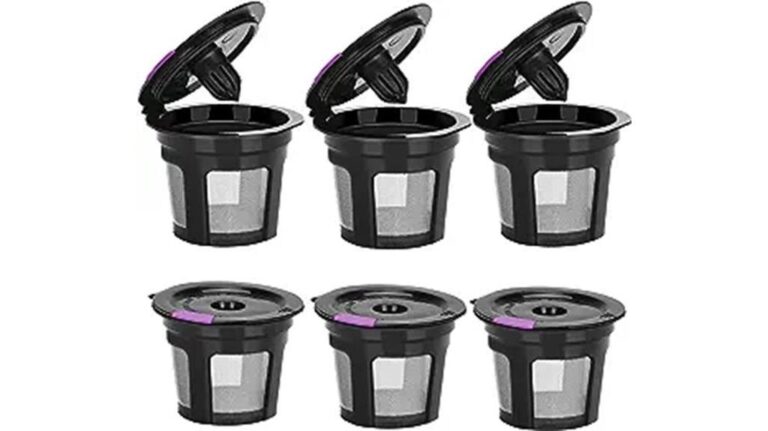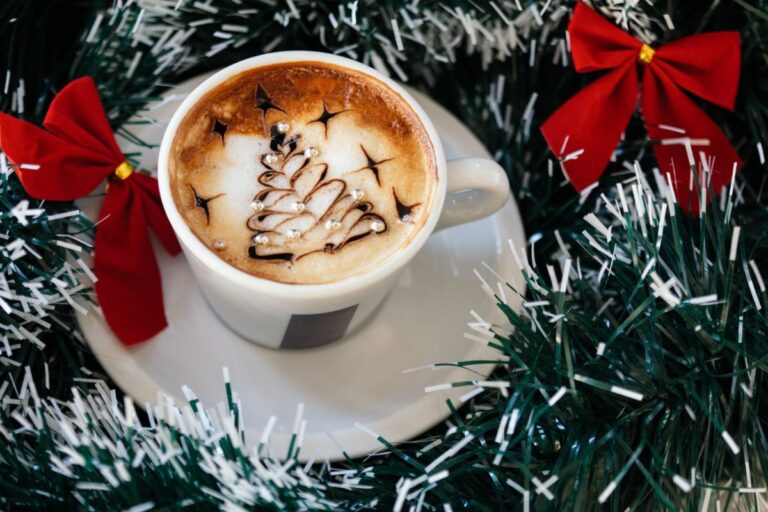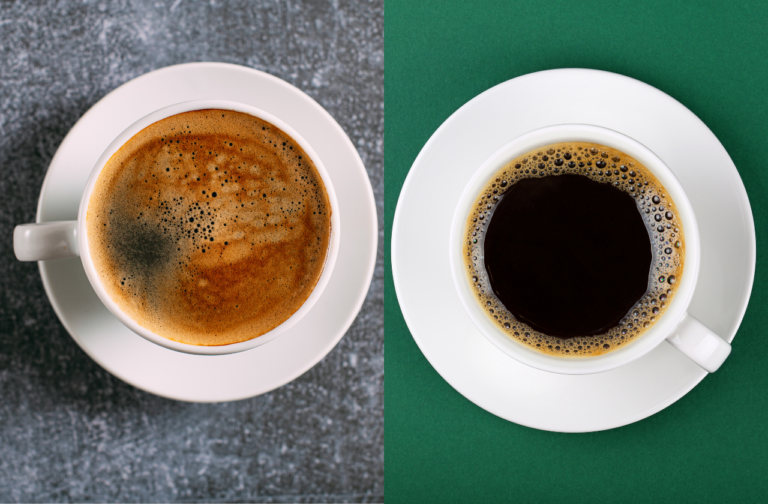How to Brew Pour Over Coffee
Pour over coffee allows us to fully appreciate the unique characteristics of different coffee beans. Each origin, roast, and blend brings its own distinct flavors and aromas, which can be accentuated or muted through careful brewing. The pour over method provides a canvas for showcasing the complexities and subtleties of the coffee, allowing us to explore a world of flavors in every cup.
To make pour over coffee, pre-wet the filter and dripper with hot water. Grind coffee beans to medium-fine, and place into the filter. Pour a small volume of water over the coffee to bloom for 30-45 seconds. Pour in hot water in slowly, moving in circles. Aim for a brew time of 2-3 minutes.
Whether you are a coffee aficionado seeking to refine your brewing skills or a novice looking to embark on a new coffee adventure, this guide will help to equip you with the knowledge and confidence to create a remarkable pour over coffee experience. So, grab your favorite beans, prepare your equipment, and let’s dive into the captivating art of pour over coffee brewing.
Essential Pour Over Coffee Equipment
To embark on your pour over coffee brewing journey, there are a few essential tools and equipment you will need:
A Pour Over Dripper: The heart of the pour over method, the dripper holds the coffee filter and grounds, allowing water to pass through and extract the flavors. Popular options include the Hario V60, Chemex, and Kalita Wave.
A Coffee Filter: Choose high-quality, unbleached paper filters that fit your dripper. They help remove sediment and oils from the coffee, resulting in a cleaner cup. Alternatively, you can opt for a stainless steel or cloth filter for a more eco-friendly and reusable option.
A Gooseneck Kettle: A gooseneck kettle with a narrow spout gives you better control over the water flow, allowing for precise pouring. Look for one with a built-in thermometer to ensure water temperature accuracy.
A Coffee Grinder: For the freshest and most flavorful pour over coffee, invest in a burr grinder. A good grinder allows you to grind coffee beans to the desired consistency just before brewing. Choose a grinder with adjustable settings for various grind sizes.
A Scale: Accurate measurement of coffee and water is crucial for consistency. A digital scale ensures precise ratios and allows you to experiment with different brew recipes.
A Timer: Brew time plays a significant role in pour over coffee extraction. A simple kitchen timer or your smartphone can help you keep track of the brewing process.
While not essential, these optional equipment can elevate your pour over coffee brewing experience:
Coffee Scales with Built-in Timer: Combining the functions of a scale and timer, these specialized scales provide convenience and streamline your brewing process.
A Pour Over Stand: A stand helps stabilize your dripper, preventing accidental spills and allowing for hands-free pouring. It also adds an aesthetic touch to your coffee setup.
A Variable Temperature Kettle: If you want more control over water temperature, a variable temperature kettle allows you to accurately set and maintain the desired heat level throughout the brewing process.
A Coffee Server or Carafe: A separate vessel to collect and serve the brewed coffee can help maintain its temperature and serve multiple cups at once.
Choosing The Right Coffee Beans And Grind Size
Making pour over coffee relies on using good coffee beans, and grinding them to the optimal size for this brew method. Without the right grind size, pour over coffee can be over or under extracted, producing a poor result and a bad-tasting cup of coffee.
Opt for freshly roasted whole coffee beans from a reputable source. Experiment with different origins and roasts to find your preferred flavor profile. Look for beans with a roast date, and try to use them within 2-4 weeks of that date for the best flavor.
The grind size affects the extraction process and brewing time. For pour over coffee, a medium to medium-fine grind is generally recommended. The consistency should resemble granulated sugar or kosher salt. Adjust the grind size based on your taste preferences and the brewing method you use.
Remember, investing in high-quality equipment and ingredients sets the foundation for a delightful pour over coffee experience. With the right tools at hand, you’re now ready to move on to preparing your workspace and diving into the step-by-step process of making pour over coffee.
Preparing To Brew Pour Over Coffee
Before you begin the pour over coffee brewing process, it’s essential to create a clean and organized workspace. This not only ensures a hygienic environment but also allows you to focus on the brewing process without distractions. Here are some good tips for setting up your workspace.
Remove any unnecessary items from the countertop or table where you’ll be brewing your coffee. Having a clutter-free space provides you with ample room to work and minimizes the chances of accidents or spills.
Wipe down the work surface with a damp cloth to remove any dust or debris. This ensures that your coffee-making process remains hygienic and free from unwanted contaminants.
Make sure the area is well-lit, enabling you to see the coffee grounds, water flow, and any other details clearly. Good lighting enhances your overall brewing experience and helps you make precise adjustments.
Assemble The Necessary Tools And Ingredients
To ensure a smooth and enjoyable pour over coffee brewing experience, gather all the required tools and ingredients before you start. Here’s a checklist of the essentials:
Gather your pour over dripper or brewer and ensure that it is clean and ready to use.
Choose the appropriate paper, stainless steel, or cloth filter that fits your dripper. Place it inside the dripper securely.
Measure out the desired amount of freshly roasted coffee beans based on your preferred brew ratio and grind size.
If using whole beans, grind them just before brewing to preserve their freshness and flavor. Adjust the grinder settings to achieve the recommended grind size.
Fill the kettle with fresh, filtered water. A gooseneck spout provides better control over the pouring process.
Place your scale nearby to measure the coffee and water accurately. Ensure it is calibrated and ready for use.
Set up a timer to keep track of the brewing time. This ensures consistency and allows you to fine-tune your brewing technique.
Ensure Optimal Water Temperature
Water temperature plays a crucial role in the extraction process and the overall taste of your pour over coffee. It’s essential to achieve the optimal water temperature for brewing. Here’s what you need to consider:
Pour cold, fresh water into your kettle and heat it until it reaches the recommended temperature. The ideal range is between 195°F (90°C) and 205°F (96°C). Using water that is too hot can result in over-extraction and a bitter taste, while water that is too cold may lead to under-extraction and a weak brew.
If you have a kettle with a built-in thermometer, monitor the water temperature closely to ensure it stays within the desired range. If not, you can use a separate thermometer to check the temperature before pouring.
If your kettle tends to heat the water beyond the desired range, allow it to cool for a short period before pouring. This ensures that the water is at the optimal temperature when it comes into contact with the coffee grounds.
By selecting a clean and organized workspace, assembling all the necessary tools and ingredients, and ensuring the water is at the optimal temperature, you set the stage for a successful pour over coffee brewing experience. In the next section, we will dive into the step-by-step guide on how to make pour over coffee, bringing us closer to that perfect cup of joe.
Step-By-Step Guide To Making Pour Over Coffee
Making pour over coffee is an involved process, but it is highly rewarding. There is no other brew method that allows the maker as much control over the brew.
The best way to get the most from your pour over brew is to follow a few methodical steps that optimize the brewing process, and draw the best brew from the setup.
Here are the steps for producing excellent pour over coffee.
Step 1: Pre-Wet The Filter And Heating The Dripper
Place your pour over dripper on top of your coffee mug or carafe.
Rinse the paper filter with hot water. This removes any paper taste and preheats the dripper and vessel.
Discard the rinse water from the mug or carafe.
Insert the pre-wetted filter into the dripper, ensuring it lies flat against the walls.
Step 2: Measure And Grind The Coffee Beans.
Use your scale to measure the desired amount of coffee beans based on your preferred brew ratio. A standard starting point is a ratio of 1:16, meaning 1 gram of coffee for every 16 grams of water.
Grind the coffee beans to a medium to medium-fine consistency, similar to granulated sugar or kosher salt. Adjust the grind size based on your preference and the specific pour over dripper you’re using.
Step 3: Bloom The Coffee Grounds
Place the coffee-filled dripper on top of your mug or carafe.
Start the timer and pour a small amount of hot water, about twice the weight of the coffee grounds, over the grounds in a circular motion.
Allow the coffee to bloom for about 30-45 seconds. During this time, the coffee grounds release carbon dioxide, creating a bubbly “bloom.”
The blooming process enhances the extraction and allows the coffee to release its flavors and aromas.
Step 4: Pour The Water In A Controlled Manner
After the blooming stage, begin the main pour. Start pouring the remaining water slowly and in a controlled manner, moving in concentric circles from the center outward.
Pour continuously, but avoid pouring too aggressively to prevent channeling and uneven extraction.
Maintain a steady pour rate, ensuring that the water level in the dripper remains consistent without overflowing.
Pour until you reach the desired final weight of water based on your brew ratio.
Step 5: Monitor The Brewing Time
Throughout the pouring process, keep an eye on the brewing time. Aim for a total brew time of around 2-3 minutes.
Adjust your pouring speed and technique if necessary to maintain the desired brewing time.
Remember that factors like grind size, coffee freshness, and personal preference may influence the brewing time. Experiment with the brew method and find what works best for you.
Step 6: Enjoy Your Freshly Brewed Pour Over Coffee
Once you’ve poured all the water, lift the dripper and allow the remaining drips to fall into the mug or carafe.
Remove the dripper and discard the used coffee grounds and filter.
Pour the brewed coffee into a thick-walled ceramic mug to retain heat.
If desired, add any additional condiments like sugar, milk, or cream, but consider trying the coffee black first to fully appreciate its natural flavors.
Congratulations! You’ve successfully brewed a delicious cup of pour over coffee. Experiment with different coffee beans, grind sizes, pouring techniques, and ratios to discover your preferred taste profile.
With practice, you’ll refine your skills and gain a deeper appreciation for the art of pour over coffee brewing. In the next section, we’ll explore troubleshooting tips and additional ways to enhance your pour over coffee experience.
Troubleshooting And Tips For Pour Over Brewing
Brewing pour over coffee is not an exact science, but there are several methods and processes that can make pour over brewing better. Here are practical tips to help you get the most from your pour over brew.
If the water is dripping too slowly or the dripper gets clogged, the grind size may be too fine. Adjust the grinder to a slightly coarser setting and try again.
If you notice that some parts of the coffee bed are extracting faster than others, it may indicate uneven pouring. Ensure you pour in a circular motion and evenly cover the coffee grounds.
If your coffee tastes bitter or over-extracted, try using a coarser grind or reducing the brewing time. Experiment with adjusting these variables until you achieve a balanced and enjoyable cup.
You can experiment with different ratios to find your desired strength. Increase the amount of ground coffee used for a stronger brew or decrease it for a milder cup.
Finer grinds tend to result in more extraction and a stronger flavor, while coarser grinds produce a lighter-bodied cup. Adjust the grind size to achieve your preferred taste.
If your coffee tastes sour or under-extracted, try increasing the water temperature slightly. On the other hand, if it tastes bitter or over-extracted, lower the temperature.
Try using coffee beans from different regions to experience the unique flavors and characteristics they offer.
Mix different coffee beans to create your own unique blend. Adjust the ratios to find the perfect balance of flavors.
Explore other pour over brewing techniques, such as the Japanese-style iced pour over or the inverted method, to add variety to your coffee repertoire.
Cleaning And Maintaining Your Pour Over Equipment
Cleaning and maintaining your pour over brewing setup is as important as the brewing process itself. Without maintaining your equipment and tools well, your coffee will slowly deteriorate in quality and flavor as your setup deteriorates.
Take the time to clean and maintain your pour over rig, and it will serve you well for many year. With that said, here are tips for cleaning, maintaining, and storing your pour over coffee equipment:
Discard used paper filters and rinse out any remaining coffee grounds. If necessary, clean the dripper with warm water and mild dish soap, ensuring all residue is removed. Rinse thoroughly and allow it to completely air dry.
Rinse reusable filters immediately after use to remove coffee oils and grounds. Clean it with warm water and a gentle brush or cloth. Follow the manufacturer’s instructions for thorough cleaning.
Store drippers and filters in a clean, dry place to prevent dust or moisture build-up. Ensure they are entirely dry before storing to avoid any unpleasant odors.
Keep your coffee beans in an airtight container away from light, heat, and moisture. This helps maintain their freshness and preserves their flavors.
If you have a gooseneck kettle with mineral build-up, descale it periodically using a vinegar solution or a descaling agent. Follow the manufacturer’s instructions for proper descaling.
Clean your coffee grinder regularly to prevent oils and residue from affecting the flavor of your coffee. Refer to the grinder’s manual for specific cleaning instructions.
By troubleshooting common issues, adjusting variables to your taste preferences, and exploring different pour over coffee recipes, you can continue to refine your brewing skills and expand your coffee palate.
Additionally, proper cleaning and maintenance of your pour over equipment ensure optimal performance and longevity. In the next section, we’ll conclude our journey with a recap and final thoughts on the joy of brewing pour over coffee.
Conclusion
Brewing pour over coffee is more than just a method of making a delicious cup of joe; it’s an experience that engages all your senses. The aroma of freshly ground beans, the precise pouring technique, and the visual beauty of the brewing process all contribute to a unique and gratifying coffee experience. Each cup becomes a reflection of your skills, preferences, and creativity, making it a personal and rewarding endeavor.
As you embark on your pour over coffee journey, don’t be afraid to experiment and explore. Adjust variables like coffee-to-water ratio, grind size, and brewing time to customize your brew according to your taste preferences. Try different coffee beans, origins, and blends to discover new flavors and profiles. The process of making pour over coffee allows you to engage with your senses, learn from your experiments, and refine your technique over time. Enjoy the journey, embrace the nuances, and find joy in every cup you create.

